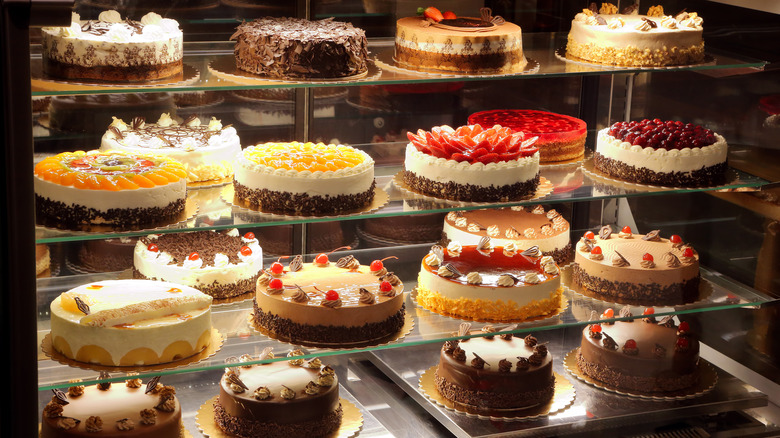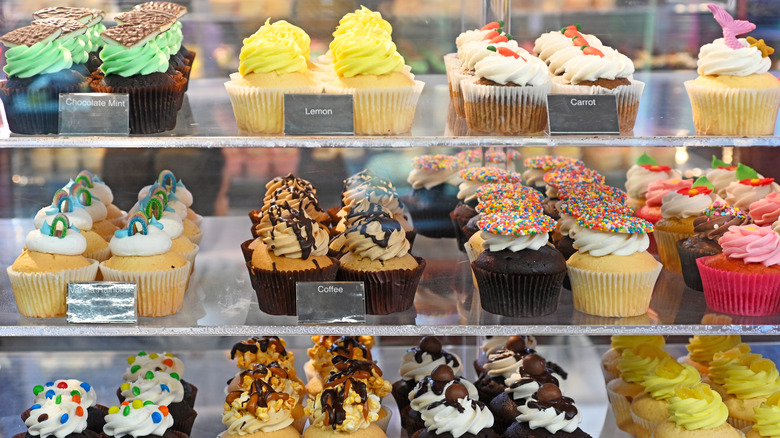How Restaurants Make Fake (And Sometimes Real) Dessert Displays
To sell foods that rely heavily on presentation, such as desserts, restaurants must show them off in the best light possible, and many accomplish this with food displays. Since even the simplest desserts are perishable (and fragile), samples will only look their best for a short time after they're created. Ergo, a restaurant might need to make two or three trays throughout a given night to keep the food looking its best. To combat this problem, some restaurants create displays using fake foods.
Using fake food for dessert displays can save an establishment money. This is because the establishment only needs to make the displays once, and they can take the time and care to ensure the creation is an idealized version of the actual dessert item. Once made, these fake displays can be used for as long as that item remains on the menu.
One of the simplest ways to make display-worthy desserts is to spray the real creations with shellac. This method coats food in a rubbery varnish, preserving it and making it suitable for display. Some food artists instead opt for paint-on varnish, which must be carefully brushed on in a thin layer. For best results, artists must work in small areas, keep the shellac's application even, and allow it to fully dry before touching it or moving on to the next section. This method is best for desserts that are naturally glossy or shiny, like chocolate.
More techniques for making fake food
A restaurant may also choose to go the professional route and hire a service to create its fake food. This third-party company will make a mold of a real dessert, perhaps even deconstructing the item to make molds of its individual ingredients, such as almonds or strawberries. The mold is then filled with a special polymer, and the food artist must take care that no air bubbles form during this process. The liquid plastic is then heated to 180 degrees, cooled, and inspected for flaws. The final step is to paint the colorless food, creating a lifelike item that's virtually indistinguishable from the real thing — unless you bite into it, of course.
Someone looking to make at-home, DIY food molds simply has to mix cornstarch and silicone until they take on a homogenous, dough-like texture with enough stability to create a detailed mold. The actual food must then be pressed into the mold and left to harden for about 24 hours. After these molds are cleaned and dried, they can be filled with modeling clay to create any number of fake foods. One thing to note, however, is that this method only works for firm foods that won't distort when pressed into the silicone and cornstarch dough.

